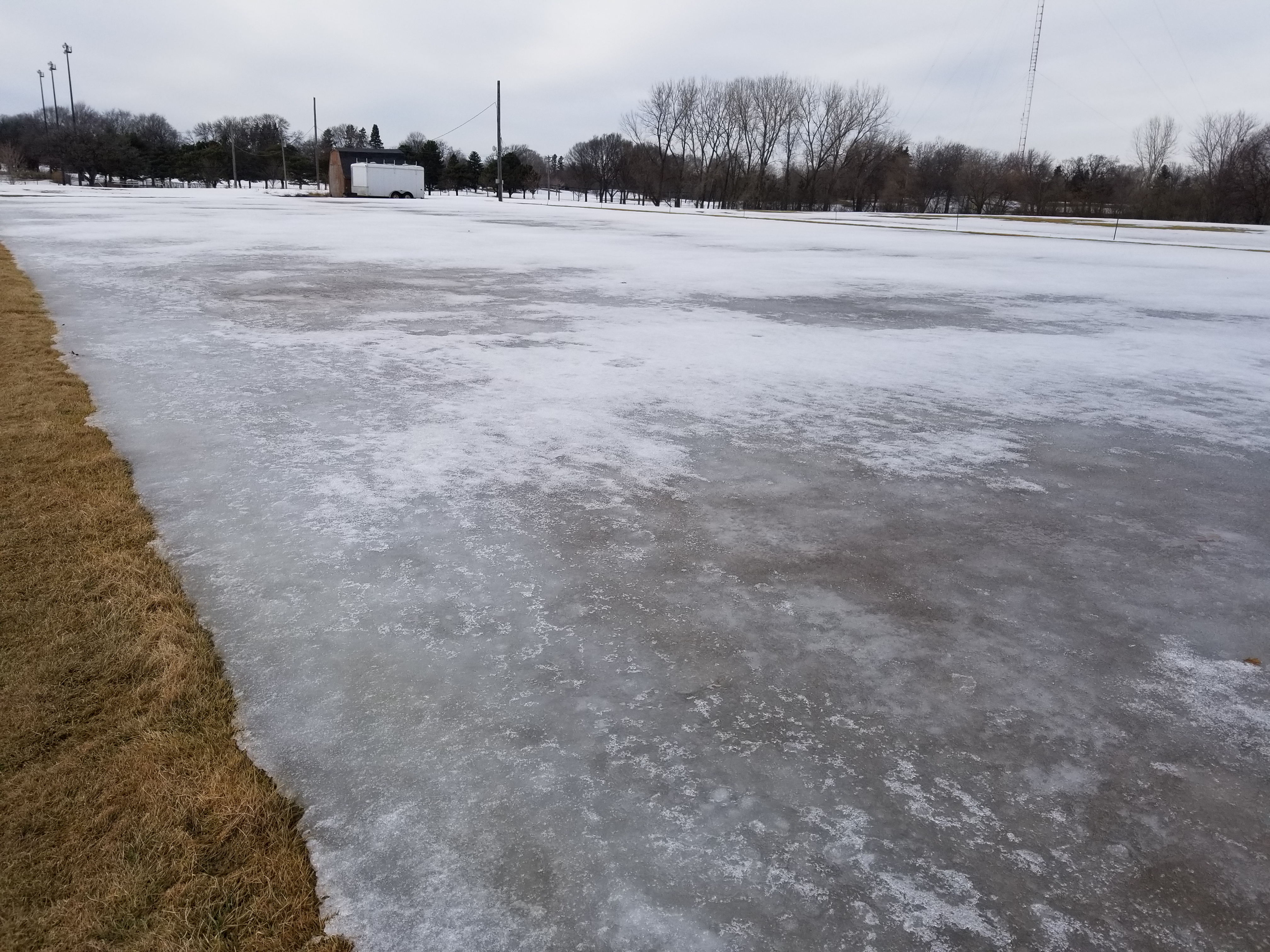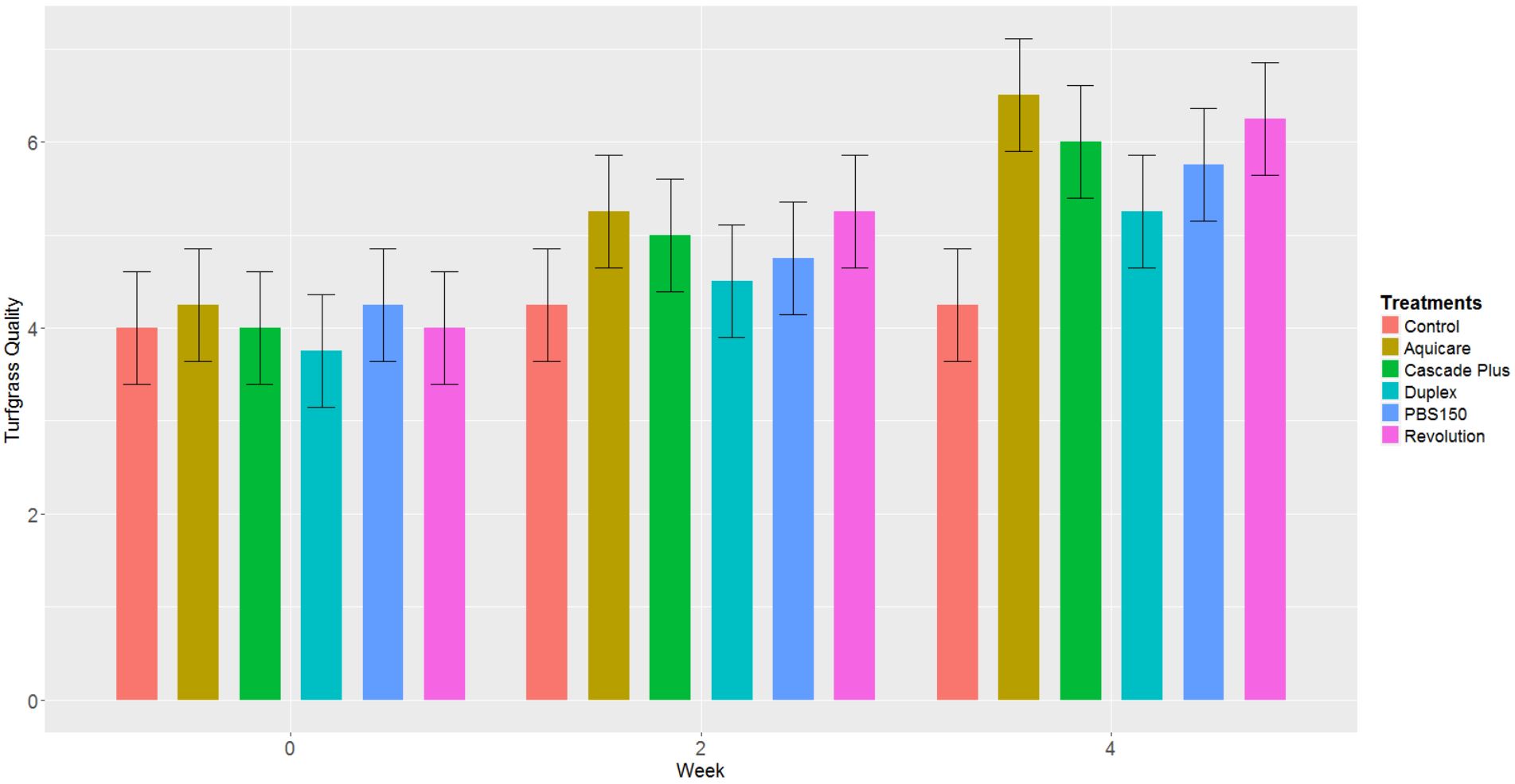By Ryan Schwab
A rising trend in golf course management is the use of wetting agents in late fall to help turfgrass recovery in the spring. Earlier recovery may lead to earlier course opening dates, which is a possible advantage here in Minnesota with our short growing season and unpredictable winters that include freeze-thaw cycles, dry periods, and ice cover (Figure 1). All of these situations may increase the potential for winter damage and include a common factor: moisture. Wetting agents are great tools for managing soil moisture issues, so theoretically their influence on moisture in the fall, through winter, and early spring may reduce winter damage. Late fall wetting agent applications are common, but this practice is not well researched yet.
Currently, we know very little on the impacts of late fall applied wetting agents on spring recovery and soil benefits. Past research indicates that improving spring green-up seems to be a hit-or-miss result, and we lack information on spring recovery in northern climates (DeBoer et al, 2017). Overwintering strategies such as heavy topdressing or protective covers are more reliable than late fall wetting agent applications for spring green-up. Through MGCSA member-driven research, we have determined that wetting agents have the ability to reduce water repellency in soils well into spring after being applied in late fall (Bauer et al, 2017). In Minnesota, we have found that this phenomenon may carry over into May or June, depending on the product. This practice puts the soil in a good position by reducing the potential for localized dry spot in the spring.
This small handful of information has led to our present research that dives deeper into spring green-up and soil benefits from late fall wetting agent applications on our sand-based research green. We are currently investigating the impacts this practice has on creeping bentgrass and soil hydrology in the following spring. Turfgrass quality ratings, average chlorophyll index (greenness), crown moisture content, soil moisture, infiltration rates, and water droplet penetration time (degree of soil water repellency) data are being collected within the first four weeks after spring thaw.
Preliminary results from the first year indicate that wetting agents may slightly quicken spring recovery, but we lack evidence showing how or why. By the fourth week, 80% of the wetting agent treatments had plots with better turfgrass quality than the untreated control (Figure 2). Localized dry spots began to appear at this time, slowing spring recovery in some plots. An observed trend was most of the wetting agents in this trial increased infiltration rates, decreased soil moisture, and reduced soil water repellency, but statistically, they all performed similarly to the untreated plots each week. Replication of this project will take place this fall into next spring. We hope to gain a better understanding of late fall wetting agent applications and their benefits. Stay tuned…
Sources
Bauer, S.J., M.J. Cavanaugh, B.P. Horgan. 2017. Wetting agent influences on putting green surface firmness. International Turfgrass Society Research Journal 13:1-5.
DeBoer, E., D.E. Karcher, M.D. Richardson, J. McCalla. 2017. Effect of late-fall wetting agent application on winter survival of ultradwarf bermudagrass putting greens. ASA, CSSA and SSSA International Annual Meetings. P. 106915.
Other articles on this topic
Late Fall Soil Surfactant Application- Have You Tried One Yet? By Larry Lennert
Wetting Agent Influence on Surface Firmness and Winter Injury of Putting Greens. By Sam Bauer and Dr. Brian Horgan

